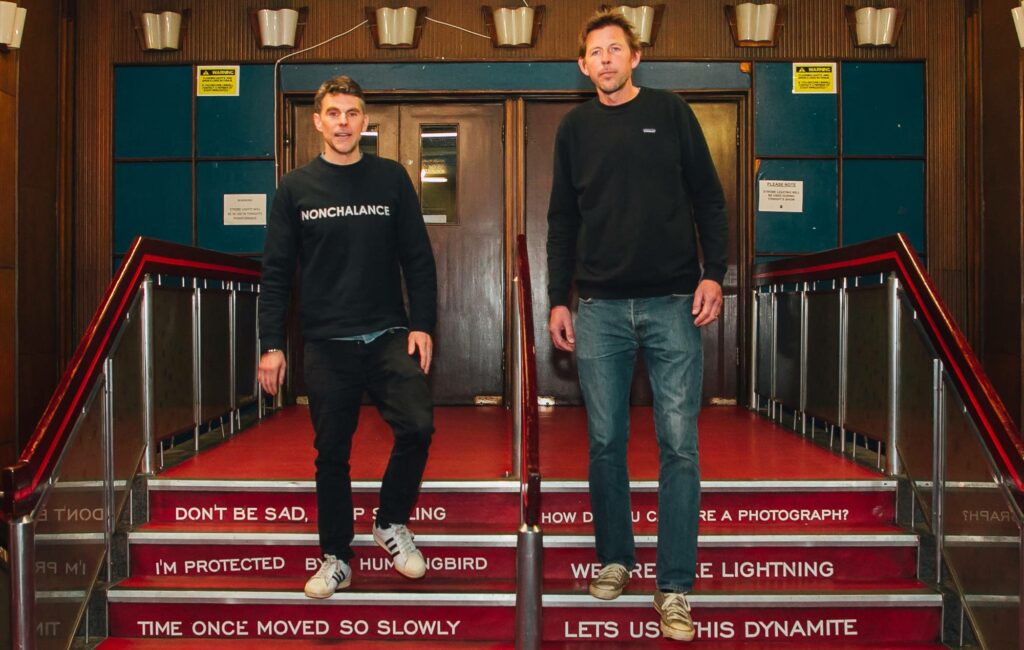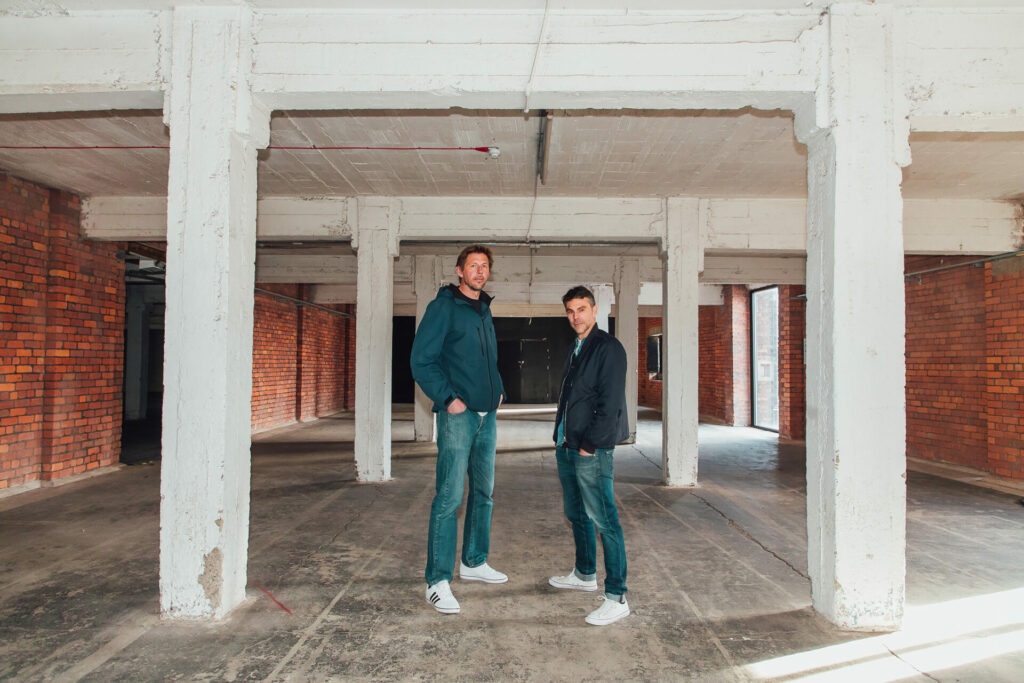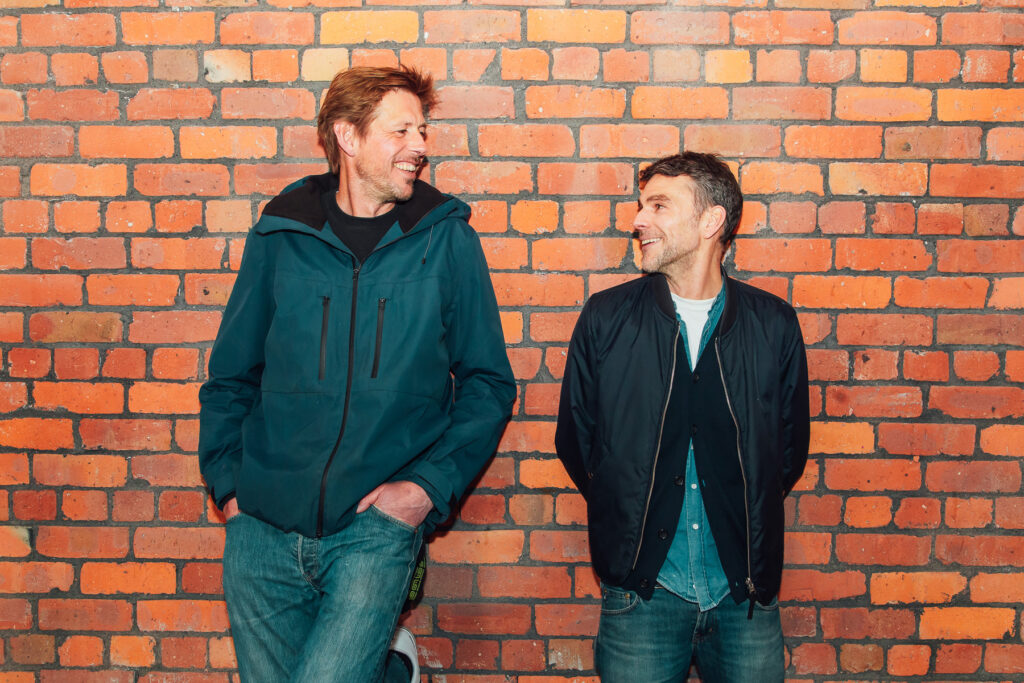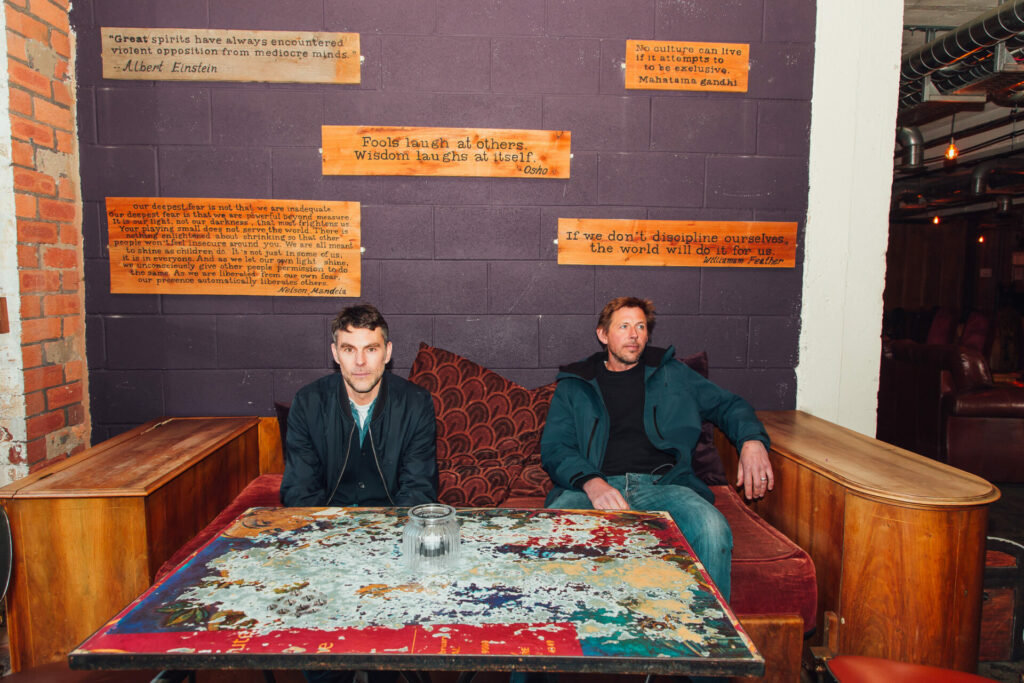Groove Armada: dance legends look back on an iconic career
As Groove Armada pick up Rolling Stone UK's inaugural icon award, the duo look back on a pioneering career
By Rich Pelley

More than 23 years after ‘At the River’ reached number 19, Groove Armada’s appearance on Top of the Pops still gives Andy Cato nightmares.
“It was a horror show,” the 6ft 8in ex-Grimethorpe Colliery Band trombonist says, squirming, over Zoom from his Cotswold farm kitchen. “In a ridiculous moment of puritanism, we insisted on playing live. It was before laptops, so we had an incredibly unstable desktop jacked into the BBC sound desk. During final dress rehearsal, the camera guy accidentally knocked the computer on the floor, wiping it completely.” After a desperate rush around the dodgiest electronic shops in London’s Shepherd’s Bush, Cato had to reprogram the whole lot from scratch. Panicking about his trombone part, he pressed ‘Enter’ the moment the cameras started to roll. “We ended up doing this hopelessly nervous performance, wondering if anything would work,” he tells me.
“We were smoking quite a lot of weed at the time,” adds Tom Findlay as we chat the following day (he missed the designated Rolling Stone UK Zoom slot because he’d gone to watch his beloved Arsenal beat the Netherlands’ PSV 1-0). “The samples came on 30 floppy disks that you had to load in exactly the right order. You can imagine how many times you’d get to 27 and then mess it all up when you’re quite stoned…”
Technology has progressed through Groove Armada’s nine-album catalogue which has scored them three UK Top 10 albums, three nominations at the Grammys and the BRITs, plus a Billboard nomination. Their latest album, 2020’s Edge of the Horizon, was recorded virtually between the two during lockdown, followed by “a totally sleepless week in Tom’s basement in east London, finishing it all off”.
“We were on the back end of tape, so collaborations with Neneh Cherry [on 2002 track ‘Think Twice’], Richie Havens [on 2004’s ‘Hands of Time’], and Candy Staton [on 2007’s ‘Paris’] were still taped because there’s something magic about the sound,” recalls Cato. “On our first records, you only had two seconds of sampling space, so you were very restricted. But a lot of creativity comes from restriction. When we delivered our first album [1998’s Northern Star], we were um-ing and ah-ing about what songs to leave off the cassette version. That’s how long ago that was!”
In an era when dance acts blended synths and DJing with striking visuals, Groove Armada focused on ensuring every element of their performance was as live as possible, curating immersive experiences and delivering unforgettable scenes at Glastonbury and a then-record-breaking five-night run at Brixton Academy in 2010. This April, Groove Armada completed what was billed as their final tour (supported by Norman Jay MBE, PBR Streetgang, Ewan McVicar and Ishmael Ensemble), and are off for a five-consecutive-night run in Australia this November. Except… didn’t they claim to quit touring 12 years ago? “Obviously, we’ve said this in 2010, when we brought the live band to a close before…” says Cato, labelling Groove Armada’s then 25-man live crew as “commercial idiocy”.
That year also saw the meteoric rise of EDM and less tolerance for Groove Armada’s more nuanced electronic sound at festivals. “It just felt like we were pushing a boulder up a hill,” says Findlay. “The effort we were putting in to perform just wasn’t being appreciated next to the superstar DJs wearing capes.” They decided to gracefully bow out. But 12 years later, both felt the time was right for one final hurrah. “I think it was just a mild sense of unfinished business that we would regret it if we didn’t,” explains Findlay.

“When we played at Latitude Festival this summer, the average age was 19 or 20,” says Cato. “It’s fantastic that we’ve managed to stay relevant.”
Since 2010, the pair have diversified, with Cato moving into farming and Findlay qualifying as a BABCP (British Association for Behavioural & Cognitive Psychotherapies) therapist.
“I read an article on the way back from a gig about industrial food production and the consequences for human health environment,” explains Cato. “Basically, whether we can sustain a liveable planet, and it’s not pretty reading.” This sent Cato down a rabbit hole from growing vegetables in his garden, to the heart of Wild Farm Now, a community of 50 farmers who supply supermarkets from restorative and sustainable means. Cato moved to France in 2008, acquiring his first farm in 2013. In 2018, he was awarded the Chevalier de l’Ordre du Mérite Agricole (The Order of Agricultural Merit) for services to agriculture — and recently moved his family back to a new farm in the Cotswolds. Which begs the question: does he play Groove Armada to his cows?
“I don’t, which is probably why they’re thriving,” he laughs. Has Findlay been to visit?
“I spent a huge amount of time in France when we recorded Black Light, 12 years ago,” Findlay says. “I’ve been down to the new farm in the Cotswolds. I’m very supportive, but it’s not really my thing. I’m a Londoner; I like my creature comforts.” Findlay’s move into therapy, meanwhile, was partly due to his own state of mind, he reveals.
“I had an extended period of depression in 2010 when we made Black Light, which is partly why it’s called Black Light, because that was exactly how I was feeling: very demotivated, avoidant and withdrawn. It took me a long time to get diagnosis and treatment. Cognitive behavioural therapy (CBT) was helpful, so I ended up reading a lot on that. That led to a Master’s in psychology and a postgraduate diploma in CBT.
“I started working at the beginning of the pandemic because I assumed music wasn’t going to be a concern for a while. Now I’m a counsellor three days a week at a London university.
I know Luke Howard from Horse Meat Disco, who I bumped into the other night, is training as a psychodynamic therapist. Ed [Simons] from The Chemical Brothers is doing something similar. It just seems that if you’re in the industry, you need to find ways to manage your mental health.”

Cato’s self-confessed “nomadic” lifestyle led to him selling his publishing rights to Groove Armada to help finance the purchase of his farm. “All those royalty cheques for ‘At the River’ being played in adverts [including one for M&S Food in 2006] go to someone else now.” Findlay has hung onto his, which means the pair retain some creative control, like saying no to the American Navy who wanted to use ‘Little by Little’ for a recruitment video. “It didn’t feel right to be recruiting for war with Richie Havens on vocals.”
With their lockdown album and final (until the next one?) tour scheduled, the duo commissioned a series of remixes of their biggest tracks by Logic1000, Dance System, Ewan McVicar and more, and have been working on new music for their upcoming 25-track GA25 box set, to celebrate 25 of all things Groove Armada — again leading to some “super intense” sessions in Findlay’s basement studio. “Tom fills his fridge full of beers and we stay down there until it’s done,” smirks Cato.
Cato grew up in Barnsley and read modern history at Oxford, where he met his girlfriend — now wife — Jo, who is Findlay’s best mate from school in Cambridge, where he grew up. “Tom’s been my first wife in terms of contact time,” he laughs. In 25 years, the pair have only had one argument, a “proper set to” in Camden that caused one to storm out of the other’s car, but neither can remember who was driving, or what it was all about.
They must have seen some things over their “sleep-deprived” 25 years together, I speculate. What are their highlights?

“Nearly meeting Prince 10 years ago in San Francisco’s Ruby Lounge was pretty amazing,” says Findlay. “We kept getting these messages that he was going to come down. Obviously, he didn’t, but the fact that we’d entered into the Purple One’s consciousness was amazing.”
“Elton John booked us to play a party for Interview Magazine in New York,” he continues. “There were eight of us crammed in this tiny dressing room right at the top; he came all the way up the stairs. I think he’d just had a pacemaker fitted and was clearly out of breath, but we were so flabbergasted, staring open-mouthed, slack-jawed, it took five minutes for anyone to offer him a seat.”
Cato recounts tales of flying in a bi-plane “in full Biggles outfits” into a US aircraft hangar to DJ and being told to “look natural” while posing between two scantily clad, greased-up ladies doing the hoovering for a big American dance magazine (neither can remember which). And that’s before we get to Manumission in Ibiza, where Groove Armada would regularly DJ in the basement while live sex shows were happening upstairs.
“We ended up living in this place called the Manumission Motel, off a roundabout on the outskirts of Ibiza Town, where all the, er, ‘entertainers’ would live,” explains Findlay.
“Before you knew it, I’d dyed my hair purple and we’d moved into this ex-brothel with gold taps and leopard-skin finish,” says Cato. “There would be someone sitting on the stairs, naked, with a sewing machine, repairing their nipple tassels. We’ve been really lucky in that we’ve had a window into that world of madness. But the best thing has been to share it with a mate and never lose sight of the total absurdity of the situation.”
